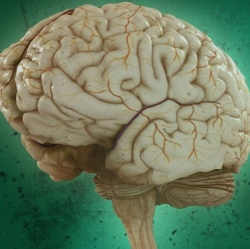
A promising new treatment for epilepsy directly targets the nerve cells, deep within the brain, that cause seizures. The treatment uses an electronic micropump and an anticonvulsant drug to inhibit the relevant areas of the brain without affecting healthy brain regions.
Very few epilepsy drugs successfully make it to clinical practice. Many result in harmful (or potentially harmful) side effects while others are rendered ineffectual by the body’s natural defenses, which prevent the drugs from reaching their intended destination. Yet 30 percent of the approximately 50 million epilepsy sufferers around the world are resistant to all existing treatments.
Researchers sought to combat this problem by devising a treatment that could control epilepsy without affecting healthy brain regions. Their solution involves a micropump 20 times thinner than a hair.
When an electrical current is applied to this micropump, small positively charged molecules, in this case ions that carry the drugs, get flung (or "pumped") towards the target area. Once there, the ions activate the GABA A and B receptors in the brain (these receptors can halt messages being sent to the central nervous system).
This leads to an influx of chloride ions into the cell and decreases the resistance of the cell membrane, with the net effect being a reduced chance that the nerve cell will fire (i.e., contribute to a seizure).
